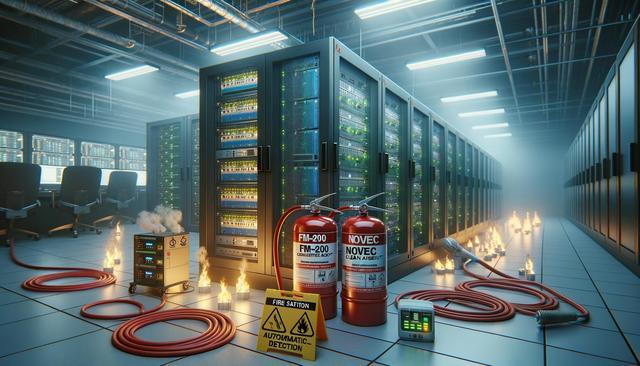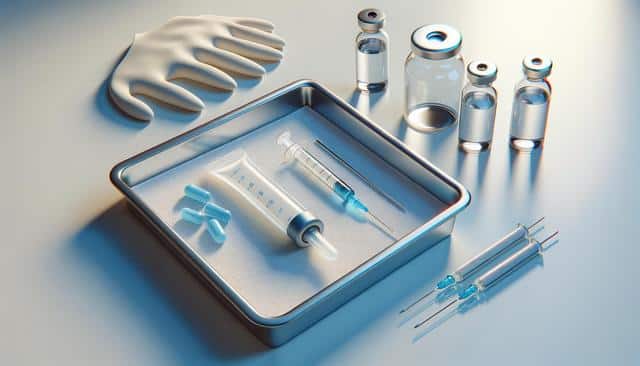
Fire Suppression Systems for Server Rooms: Exploring FM-200 and Novec Clean Agent Solutions
The Critical Need for Fire Suppression in Server Rooms
Server rooms house highly sensitive and expensive equipment that forms the backbone of modern business operations. These environments are vulnerable to fire risks due to the presence of electrical systems, high-density cabling, and constant power usage. Any fire event in a server room can lead to significant downtime, data loss, and financial setbacks. This is why implementing an effective fire suppression system is not just a precaution—it’s a necessity.
Traditional water-based sprinkler systems are not suitable for server rooms because water can cause as much damage as the fire itself. Instead, clean agent fire suppression systems like FM-200 and Novec are preferred. These systems are designed to extinguish fires without leaving any residue or compromising sensitive electronic equipment. They act quickly, suppressing fires at an early stage, often before visible flames appear.
Implementing a fire suppression system tailored to server room requirements helps maintain business continuity and regulatory compliance. With the increasing value of digital assets and the cost of downtime, investing in clean agent solutions becomes a strategic decision for IT infrastructure protection.
Understanding FM-200 Fire Suppression Systems
FM-200, also known as HFC-227ea, is a widely used clean agent for fire suppression in data centers and server rooms. It is stored as a liquid and discharged as a gas, rapidly suppressing fires by absorbing heat and interrupting the combustion process. FM-200 is colorless, odorless, and leaves no residue, making it ideal for protecting electronic equipment without cleanup concerns.
Some key advantages of FM-200 systems include:
- Fast extinguishing times, often within 10 seconds
- No harm to equipment or data storage devices
- Safe for occupied spaces when designed to standard guidelines
- Minimal downtime after discharge
FM-200 systems are engineered with automatic detection components, such as smoke and heat sensors, that trigger the release of the agent when a fire is detected. These systems are also scalable, making them suitable for both small server closets and large data centers.
Compliance with international standards like NFPA 2001 ensures that FM-200 systems are installed and maintained according to best practices. Regular inspections and system testing are essential to ensure ongoing reliability and performance.
Novec 1230: A Sustainable Alternative
Novec 1230 is another clean agent solution that has gained popularity due to its environmental profile. Unlike some halocarbon agents, Novec 1230 has a low global warming potential and a short atmospheric lifetime. It is considered a more sustainable choice for organizations looking to align with environmental goals while ensuring effective fire protection.
Novec 1230 suppresses fire by removing heat and interrupting the combustion process. It is safe for use in occupied spaces and, like FM-200, leaves no residue. The agent is stored as a liquid and vaporizes upon release, quickly filling the protected area and extinguishing the fire.
Benefits of using Novec 1230 include:
- Excellent environmental performance
- High safety margin for personnel
- Suitable for high-value asset protection
- Compliance with sustainability initiatives and green building standards
Novec systems are typically paired with advanced detection technologies, such as very early smoke detection apparatus (VESDA), to ensure immediate activation. This fast response capability is critical in server rooms, where even minor delays can result in significant damage.
Automatic Detection and System Integration
Automatic detection is a cornerstone of modern fire suppression systems in server rooms. Integration with clean agent systems like FM-200 and Novec 1230 ensures rapid response to fire threats, often before they escalate. Detection systems use a combination of smoke, heat, and sometimes flame detection to identify fire hazards at the earliest possible stage.
Components of automatic detection systems include:
- Smoke detectors (ionization or photoelectric)
- Heat detectors
- Air sampling detectors like VESDA
- Control panels and alarm interfaces
These components are connected to a central control unit that monitors the environment and activates the suppression system when needed. Many systems also integrate with building management systems (BMS) and provide remote monitoring capabilities, enhancing situational awareness and response coordination.
Routine testing and maintenance of detection systems are vital to ensure reliability. Fire suppression systems must be inspected according to manufacturer recommendations and local fire codes to maintain compliance and performance integrity.
Ensuring Compliance and System Maintenance
Compliance with fire safety regulations is essential for any organization operating server rooms. Standards such as NFPA 2001 and ISO guidelines provide detailed requirements for the design, installation, and maintenance of clean agent fire suppression systems. These standards help ensure that systems are safe, effective, and reliable.
Key compliance considerations include:
- Proper system sizing based on room volume and fire hazard assessment
- Installation by certified professionals
- Regular maintenance and inspection schedules
- Documentation and recordkeeping for audits
Training staff on emergency procedures and system operation is another critical component of compliance. Personnel should be familiar with the alarm signals, evacuation protocols, and how to contact emergency services if needed.
Failing to maintain a compliant system can result in safety risks and potential legal liabilities. Therefore, ongoing system evaluation and updates in line with technological advancements and regulatory changes are recommended to keep server rooms secure and operational.
Conclusion: Protecting Your IT Infrastructure with Clean Agent Fire Suppression
Clean agent fire suppression systems, such as FM-200 and Novec 1230, offer a reliable and efficient way to protect server rooms from fire damage. With fast-acting, residue-free performance and compatibility with automatic detection systems, these solutions help safeguard critical infrastructure while supporting regulatory compliance and operational continuity.
By investing in properly designed and maintained fire suppression systems, organizations can minimize the risk of data loss, equipment damage, and extended downtime. Whether prioritizing environmental considerations with Novec or opting for the proven reliability of FM-200, choosing the right solution tailored to your facility’s needs is a proactive step toward long-term IT resilience.


